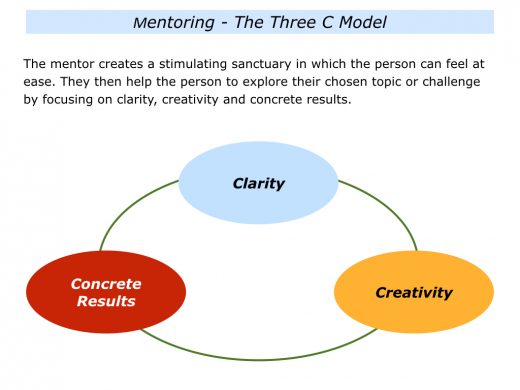
Good mentors are wise and trusted advisors. They pass on knowledge in a way that helps the mentee to achieve their personal or professional goals.
Mentors are now used by many people in organisations. Why? Despite being successful, individuals sometimes like to take time-out to reflect.
People like to get an overview of their situation and make good quality decisions. They also like to draw on the mentor’s knowledge so they can be even more effective in their work.
Imagine that you want to find and make good use of a mentor. Let’s explore some steps towards making this happen.
You can clarify the
qualities you want in a mentor
What are the qualities you want in a mentor? Different people look for different things. One person said:
“Credibility is crucial. The person must know their onions and be an expert in their field.
“They must be a good listener and respect my views but, at the same time, I don’t want them to pull any punches.
“They need to have had ups and downs, but still be positive. I want to benefit from their experience of going through challenges and knowing what it takes to be successful.”
You will have your own list of qualities you want in a mentor, but one characteristic stands out in successful mentoring relationships.
Values fit is vital. Look for a mentor who expresses the values you believe in and seems able to do so successfully.
If you wish, try tackling the exercise on this theme. This invites you to describe the qualities you want in your ideal mentor.
You can find a mentor – or
mentors – with these qualities
Some organisations have formal schemes that provide a list of potential mentors. They then invite mentees to choose from this faculty.
Several things are worth bearing in mind if this is the case. It is important:
For the mentee to choose the mentor – rather than have one assigned.
For the mentee to, if possible, choose a mentor who is outside the line – not the mentee’s manager or manager’s manager.
For the sessions to be confidential and focused on the mentee’s agenda – not acting as another form of management.
What if your organisation does not have a formal mentoring programme? Start by clearing it with your manager and HR department that it will be okay to have a mentor. They will normally be supportive.
You can then do what many people have done before and approach somebody to ask if they would be your mentor. Surprisingly, this often works.
You can have different mentors for different topics, for example, a technical mentor and a career mentor. If you decide to approach a potential mentor take the following steps.
Clarify what you can and can’t expect from the person.
Do your research thoroughly. Get to know about the person, their values and how they are regarded. Do this by asking around – blind dates seldom work.
Clarify what you do and don’t want from the mentor.
Clarify how to approach the person.
You will need to position the mentoring in a way that works for them. They are probably busy people, so you must do all the leg-work and fit in with their diary.
You can make clear
contracts with the mentor
Start by having an informal meeting with the potential mentor. Explain the topics you want to cover during the mentoring sessions. You may want to focus on, for example:
How to build on my strengths and manage the consequences of my weaknesses.
How to take over an existing team.
How to find solutions to a particular challenge.
How to take the next step in my career.
Or other topics.
Explain how often you would like to meet and how you will prepare for the sessions. You may want to start, for example, by having 3 sessions and then reviewing the contract.
If things seem worth pursuing – and both parties agree – set a date for the first formal meeting.
Good mentoring is often based on clear contracting. So try tackling the following exercise. This invites you to do three things.
Describe the specific things you want to want to get – including the knowledge, ideas and tools – from the mentoring sessions.
Describe the specific things you see as your responsibilities in working to achieve these goals
Describe the specific help you want from the mentor.
Share these ideas with the mentor and make clear working contracts.
You can make good use
of the mentoring sessions
Imagine you have chosen a mentor. You have had an informal meeting and initially agreed to meet for three sessions.
You have set the first date and told the mentor you will flag-up beforehand some of the topics you want to explore during the meeting. Here are some suggestions for making the most of the actual sessions.
You can prepare
properly for the session
Start by clarifying the actual topics you want to discuss with your mentor. For example:
How to manage a difficult person in my team
How to lead the team to success.
How to …
You might also want to anticipate how the mentor may try to help you explore these topics.
Different mentors will use different models for mentoring. One common approach, however, is for them to use adaptations of the Three C Model for helping people to find solutions to challenges.
Here is the framework such mentors use, though they will adapt this in their own way.

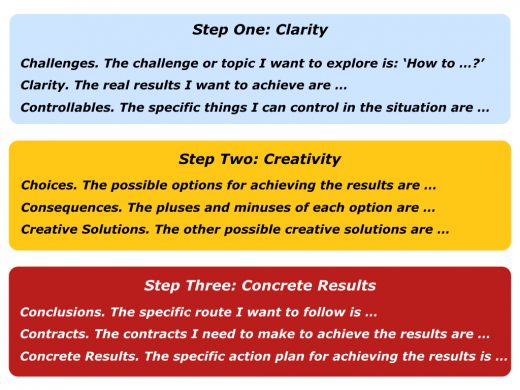
The mentor’s role is to create a stimulating sanctuary. It is then to help the person explore the first challenge they want to tackle. They may then, in their own way, invite the person to work through some of the following questions.
Clarity
What are the topics you would like to explore? What for you would make it a successful session?
Looking at these various themes, which is the first challenge you would like to tackle? Can you give some background and explain what is happening at the moment?
Let’s start by establishing clarity. Looking at the challenge, what are the real results you want to achieve?
If there are several results you want to achieve, let’s put these in order of priority.
Looking at the situation, what are the controllables? How can you build on what you can control and manage what you can’t?
Let’s summarise the things we have covered? What are your specific goals? What are the real results you want to achieve? What is your picture of success?
Let’s be crystal-clear on the ‘What’ before moving onto the ‘How’.
Creativity
Let’s consider the possible choices you have for tackling this challenge.
What do you see as Option A? (Doing nothing is, of course, an option.) What is Option B, Option C, Option D, Option E?
What other strategies have you tried before? Are there any other possible options?
Let’s consider the consequences of each option. What are the pluses and minuses involved in pursuing Option A, Option B, Option C, Option D, Option E?
We will soon be exploring any other potential creative solutions, but first let’s check your gut feeling for each of the possibilities. Rate the attractiveness of each option. Do this on a scale 0 – 10.
Let’s move onto the other possible creative solutions. First, let’s re-establish your goals. What are the real results you want to achieve?
Looking at the different options you have outlined, is it possible to take the best parts from each option and create a new road?
Let’s learn from your successful history. Have you ever been in a similar situation in the past and managed it successfully? What did you do right? How can you follow these principles again in the future?
What can we learn from other people who have tackled similar challenges successfully? What did they do right to achieve their goals? How can you follow some of these principles in your own way?
Let’s consider your strengths – where you deliver As, rather than Bs or Cs. How can you use your strengths and assets to tackle the challenge? How can you complement your strengths by getting other kinds of support?
Good mentors then, if appropriate, ask if it is okay to share their ideas. If so, the pass on knowledge, models and tools that the mentee can use to achieve success.
They share these ideas in a way the person can accept. So they may say something like the following.
Looking at the results you want to achieve, is it okay if I share some ideas? If so, here are some possible things that you may wish to consider.
*
*
*
Looking at the ideas we have explored, which ones resonate? Which would you like to explore further? Which might be useful in this situation?
Let’s return to the results you want to achieve. What are the three key things you can do to give yourself the greatest chance of success? Looking at the challenge: Are there any other possible creative solutions?
Concrete Results
Looking at the different options we have discussed, which option – or combination of options – do you want to pursue?
What will be the pluses and minuses of pursuing this option? Are you prepared to accept the whole package?
Let’s move on to your action plan. What are the steps you can take to reach your goals? How can you make these happen?
Momentum is vital, so how can you get an early success? You can only do your best, of course, and make sure you also have a back-up plan.
What is the next challenge you want to tackle?
———–
Before the session you can prepare properly by working through each of the challenges, but also leave scope for exploring these further with your mentor. Here is the framework you can use.
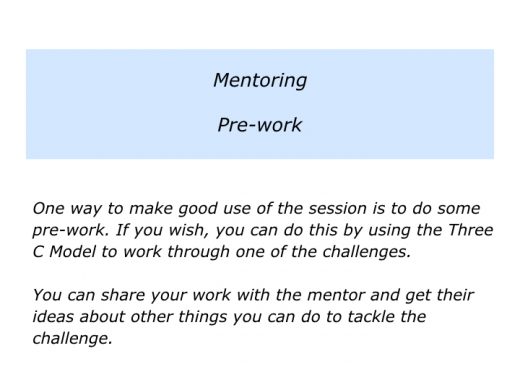
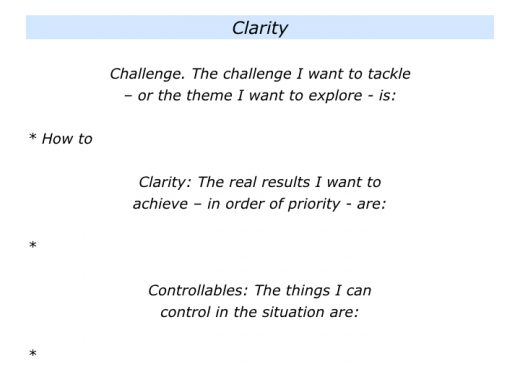
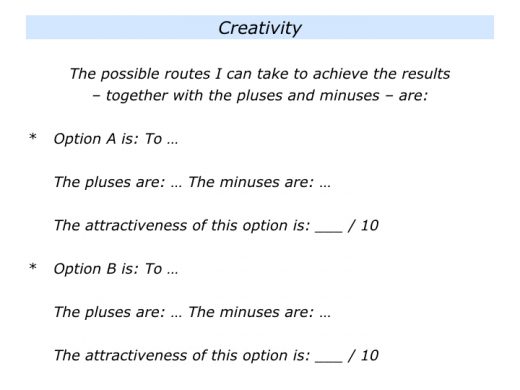
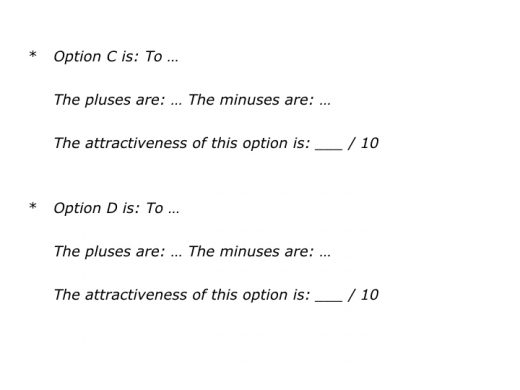
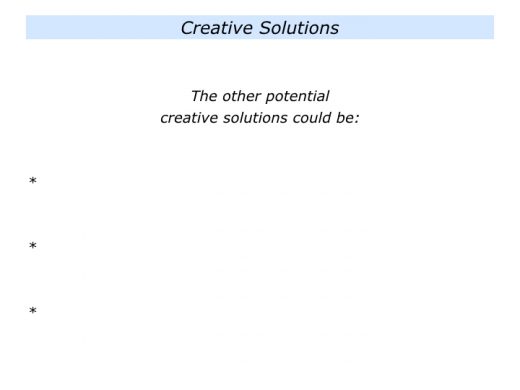
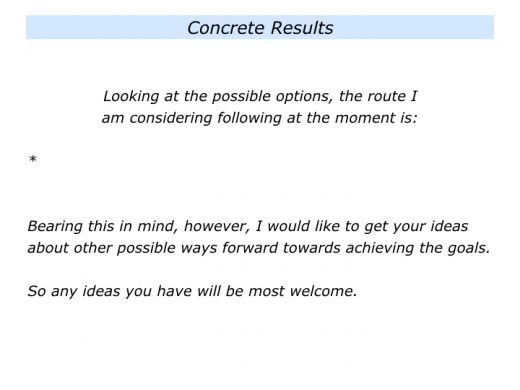
Give the mentor time to prepare by emailing the topics you want to discuss a few days before the session. Relax and look forward to the meeting.
You can learn from the mentor
Begin the session by again thanking the mentor for setting aside time in their diary. Repeat the topics you want to explore and what you want to take away from the session. Ensure you make clear contracts about the agenda.
As mentioned earlier, the mentor may well use the Three C Model – or a similar approach – for helping you to explore your chosen topic.
If you wish, you may say something like the following to kick off the session.
Thank you for meeting with me. As I mentioned in the email, the topics I want to explore today are:
How to …
How to …
How to …
Is that okay? If so, here is the first topic I would like to explore. I would like to look at:
How to …
Can I give you a bit more background about the situation? This is what is actually happening at the moment.
*
*
*
Looking at what has happened, here are the things I have tried to do in the past. Some of these have worked, some have had only limited success.
*
*
*
Looking at the situation, I have been considering the real results I want to achieve.
The real results I want to achieve are:
*
*
*
Bearing this in mind, I have explored several possible options for going forward – together with the consequences. Here they are:
Option A is …
Option B is …
Option C is …
I would like to get your ideas. Have I covered all the options? Are there any other routes I might take?
Looking at your own experience, what are the courses of action that seem to work? What do you know about options that have worked in similar situations for other people?
Are there any other things I may wish to consider?
Ask the mentor to share any tools, knowledge, models, experience or ideas they may have for helping to achieve the goals. Listen and learn.
Show that you are taking the ideas on board, because your mentor may also require encouragement. But remember that you are in charge of the session. So, if things go off-track, get the session back on course.
Continue until you have got enough ideas and tools for tackling the first challenge. Create time during the session to reflect on:
The specific things I have learned so far are:
*
*
*
The specific things I want to explore in the rest of the session are:
*
*
Move onto the next challenge, repeat the process and continue until you have completed the agenda.
You can clarify what you have learned,
thank the mentor and arrange the next session
Finish the session in a positive way. Explain the ideas you have taken away and, if appropriate, how you plan to translate these into action.
Mentors like to pass on knowledge that helps people to succeed. So you will probably find that describing your take aways will be satisfying for the mentor. Thank the mentor again and set-up the next session.
If you wish, try tackling the exercise on their theme. This invites you to describe the specific things you can do to make good use of the mentoring sessions.



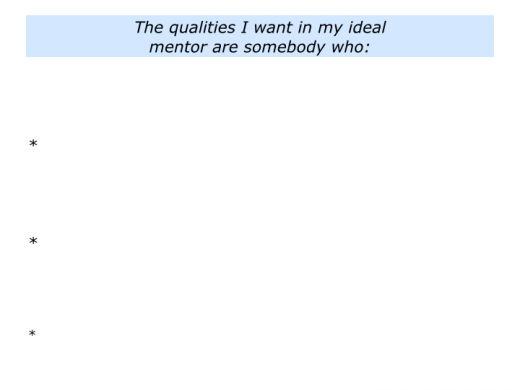
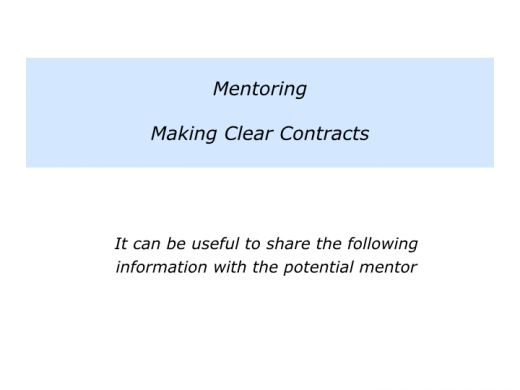
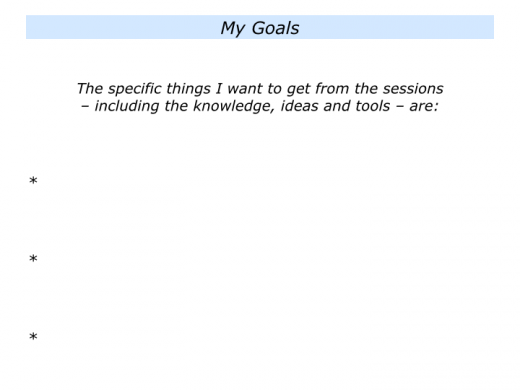
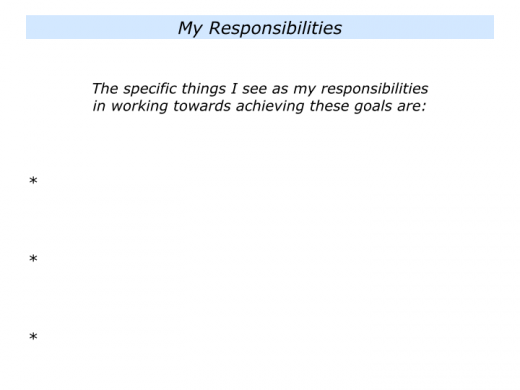
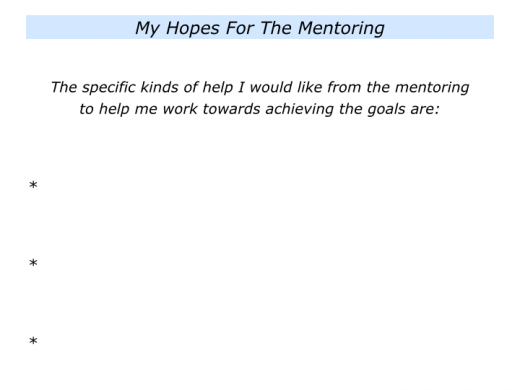
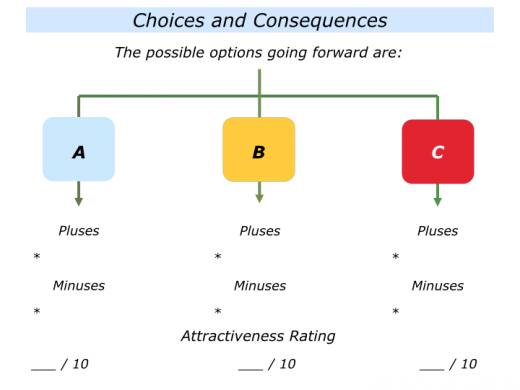
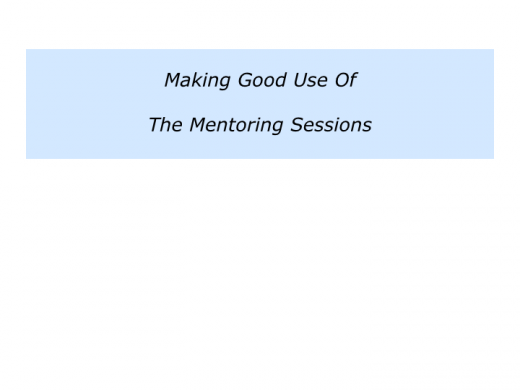
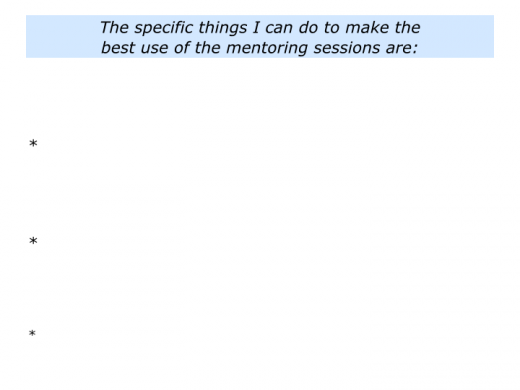




Leave a Reply